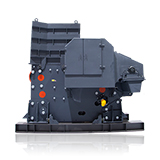How to Ensure the Stability of Mobile Crushers?
Mobile crushers have revolutionized the quarrying, mining, and recycling industries by offering unparalleled flexibility and reducing material transportation costs. However, their inherent mobility introduces unique challenges to operational stability. Unlike stationary plants anchored to massive concrete foundations, mobile crushers are dynamic systems that must achieve stability through proper setup, operational discipline, and proactive maintenance.
This article provides a comprehensive analysis of the factors critical to ensuring the stability of mobile crushers, encompassing site preparation, machine setup, operational best practices, and a robust maintenance regimen. The goal is to outline a holistic strategy that minimizes vibration, prevents unexpected downtime, and extends the machinery's service life, thereby safeguarding return on investment.

1. The Foundation of Stability: Proper Site Selection and Setup
The stability of a mobile crusher begins the moment it arrives on site. A poor setup can lead to chronic instability, excessive wear, and even catastrophic failure.
1.1. Site Preparation and Ground Conditions
A thorough site inspection is paramount. The operating platform must be:
- Level and Compacted: The ground should be level, firm, and capable of supporting the significant weight of the crusher, often exceeding 40-50 tons. Soft, uneven, or sloping ground can cause the machine to settle or tilt during operation, leading to misalignment and dangerous levels of vibration. Using a bulldozer or compactor to create a stable, level pad is a non-negotiable first step.
- Free of Debris and Obstructions: The area around the crusher must be clear to allow for safe movement and to prevent materials from building up under the chassis, which can interfere with stability or create a fire hazard.
1.2. Deployment of Outriggers and Jacks
Outriggers are the primary means of transferring the crusher's dynamic load from its tires or tracks to a wider, more stable footprint.
- Correct Sequencing: Outriggers should be deployed in a sequence recommended by the manufacturer, typically starting from one corner and moving diagonally to ensure even weight distribution.
- Full Contact and Pressure: Each outrigger pad must make full contact with the ground. On soft ground, large, purpose-built steel or timber mats should be placed under the pads to prevent sinking. The outriggers should be tensioned until the machine's tires are slightly lifted off the ground, indicating that the entire weight is being borne by the stable outrigger system. Relying on tires or tracks for support during crushing is a primary cause of instability.

2. Operational Parameters: The Key to Controlled Forces
A mobile crusher is a system of immense kinetic energy. How material is fed into this system directly dictates its stability.
2.1. The Critical Role of Consistent and Controlled Feeding
Erratic feeding is the arch-enemy of crusher stability.
- Avoiding "Feast or Famine": A surge of material (flood feeding) can choke the crushing chamber, causing a rapid spike in power demand and potentially stalling the crusher. Conversely, trickle feeding or running the crusher empty allows the hammerhead or mantle to strike irregularly, creating violent, unbalanced forces. An optimally filled chamber provides a "rock-on-rock" cushion that promotes steady, efficient crushing.
- Utilizing Feeders Correctly: The integrated or independent feeder must be used to meter material at a consistent rate that matches the crusher's capacity. The feeder speed should be adjusted in real-time based on the power draw of the crusher's motor, maintaining an optimal load.
2.2. Monitoring Power Draw and Hydraulic Pressure
Modern mobile crushers are equipped with sophisticated monitoring systems. The ammeter (for electric drives) or engine RPM/load indicator (for diesel-hydraulic drives) is the most important gauge for an operator.
- Optimal Load Indication: A steady, high power draw indicates a full chamber and efficient operation. Frequent peaks and troughs signal an unstable feed. Operators must learn to interpret these readings and adjust the feeder accordingly.
- Hydraulic System Monitoring: For crushers with hydraulic adjustments and clearing systems, stable hydraulic pressure is crucial. Frequent pressure spikes can indicate tramp metal or uncrushable objects, which impart severe shock loads to the entire structure.
2.3. Material Characteristics
The properties of the feed material significantly impact stability.
- Feed Size Distribution: The feed should conform to the crusher's designed maximum feed size. Oversized boulders can cause shock loading and instability.
- Abrasiveness and Moisture Content: While these factors primarily affect wear parts, sticky, wet material can cause clogging in the chamber or on screens, leading to an unbalanced condition. Pre-screening or scalping off fine, wet material before the crusher can greatly enhance stability.
3. Mechanical Integrity: The Backbone of Stability
Even with perfect setup and feeding, a machine with poor mechanical health cannot operate stably.
3.1. Wear Parts Management: The Rotating Mass Balance
The rotor in an impact crusher or the mantle in a cone crusher is a high-precision, balanced component. As wear parts (blow bars, mantles, concaves) wear, their mass distribution changes.
- Symmetric Wear: It is critical to replace wear parts in sets and to rotate them according to the manufacturer's schedule. Replacing a single blow bar on a multi-bar rotor creates a severe mass imbalance, resulting in destructive vibrations that can damage bearings, the shaft, and the crusher's frame.
- Regular Inspection: Wear parts should be inspected frequently for uneven wear patterns, which can be a symptom of other issues like misaligned feed or worn rotor bearings.
3.2. Bearing and Drive System Health
Bearings support the high-load, high-speed rotation of the crusher's core components.
- Lubrication: Proper lubrication with the correct type and grade of grease or oil is essential. Over-lubrication can be as harmful as under-lubrication, leading to overheating and seal failure.
- Vibration Analysis and Temperature Monitoring: Regularly checking bearing temperatures and, where possible, performing vibration analysis can detect early signs of failure before they lead to a catastrophic breakdown that compromises the machine's structural stability.
3.3. Structural Integrity and Fasteners
The constant vibration of crushing operations can loosen the very bolts that hold the machine together.
- Bolt Torque Checks: A routine schedule for checking and re-torquing critical structural bolts (e.g., crusher housing bolts, motor mounts, liner fasteners) is essential. This should be done when the machine is cold and according to specified torque values.
- Crack Inspection: The main frame and hopper should be periodically inspected for hairline cracks, especially around stress concentration points like welds and corners.
4. Maintenance and Inspection
4.1 Regular Inspections
Conduct regular inspections to identify wear and tear or potential stability issues. Check suspension systems, chassis integrity, and tire conditions.
4.2 Component Maintenance
Maintain key components such as brakes, hydraulic systems, and steering mechanisms to ensure they function correctly. Proper maintenance reduces the risk of mechanical failures that can affect stability.
4.3 Vibration Monitoring
Use vibration monitoring systems to detect excessive vibrations that can lead to instability. Address any issues promptly to prevent long-term damage.
5. The Human Factor: Training and Culture
Technology and procedures are ineffective without skilled and diligent personnel.
5.1. Comprehensive Operator Training
Operators must be more than just drivers. They need to understand the mechanics of the crushing process. Training should cover:
- Machine-Specific Knowledge: Understanding the specific setup, operational limits, and monitoring systems of their crusher.
- Troubleshooting Skills: Ability to recognize abnormal sounds, vibrations, and performance indicators and take corrective action.
- Situational Awareness: Constantly monitoring the entire process, from the excavator loading the hopper to the final product stockpile.
Ensuring the stability of a mobile crusher is not a single action but a continuous, integrated process. It is a synergy between a well-prepared site, a correctly deployed machine, controlled and informed operational practices, and an unwavering commitment to mechanical upkeep. By viewing stability as a holistic system—where site conditions, material flow, mechanical health, and human expertise are inextricably linked—operators and managers can transform their mobile crusher from a potential source of downtime into a model of reliability, efficiency, and profitability. In the demanding environments where these machines operate, a stable crusher is not just a best practice; it is the foundation of a successful operation.







